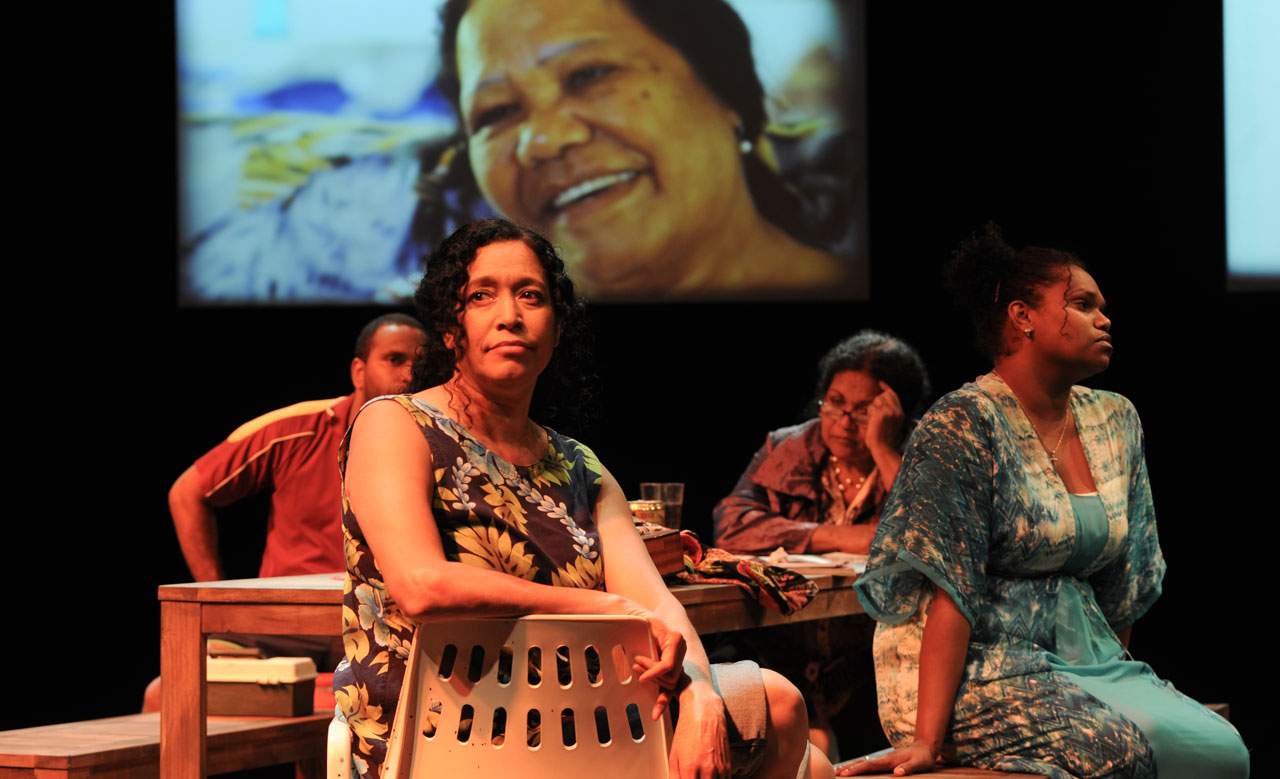Beautiful One Day – Belvoir, Ilbijerri and Version 1.0
Three companies journeyed to Palm Island and brought back a special piece of theatre.
Overview
This review was written about the Sydney run of Beautiful One Day at Belvoir St Theatre in November 2012.
Beautiful One Day shows that devised theatre still has a unique power to bring people together for true sharing, collaboration, and storytelling. With the support of Belvoir, leading Indigenous theatre company Ilbijerri and documentary performance maestros Version 1.0 went and tested the waters at the Aboriginal community of Palm Island. When their suggestions for a project weren't rebuffed, they developed the work with the residents, three of whom join the seasoned performers on stage.
Palm Island is a place we've mainly seen in snippets on the news — not anybody's best angle. It captured headlines in 2004, after the death in custody there of Mulrunji Doomadgee, whom the coroner found to have massive internal injuries. After the autopsy report was made public, there were demonstrations that turned to rioting. This event, still a trauma and a focus for the people of Palms, is at the chronological centre of the play, although in this version of the story, it is part of a continuum of acts of violence committed by white Australia for which there has never been justice. At the same time, the island has a continuous history of asserting its rights, including through large strikes in 1957 against the Aboriginals Protection Act, which had Aboriginal people under state control since 1897.
As mentioned, this is devised theatre without writer or director, so linear story is not its strength — though nor its intention. Instead, the Beautiful One Day team — performers Magdalena Blackley, Kylie Doomadgee, Paul Dwyer, Rachael Maza, Jane Phegan, and Harry Reuben, plus additional devisors Sean Bacon, Eamon Flack, and David Williams — build layer upon overlapping layer of story, context, and meaning.
A big success is that they set up an atmosphere of chattiness with the audience from the get-go, creating a feeling of lightness and inclusion. They use a Version 1.0-influenced toolkit of multimedia (presented, not excessively, across three screens), interviews, transcripts of historical and legal documents, and fictionalised scenes to build a picture of Palms. A nod to the 'telling their own stories' trope has the performers actually reading and acting out memoirs from books literally printed and bound, a nice little kick in the pants for anyone who thinks Aboriginal history is sidelined mostly because it's oral in form.
The scenes about Mulrunji's death can't match the breadth and discovery of Chloe Hooper's award-winning book on the subject, The Tall Man, which is among the great works of creative non-fiction produced in this country. If the story of what happened to Mulrunji and in the subsequent trials and inquests appears more damning in this viewing, it is because the facts are condensed into a smaller space, in which it is impossible for the officers of law and justice involved to hide. It seems a pity, though, that in some moments, the police are portrayed cartoonishly, as a means to a joke.
Even if it doesn't bring new facts to the conversation, Beautiful One Day certainly brings a new feeling. In trying to get a view of Palm Island from Palm Island, rather than of Palm Island from the mainland, the picture they conjure is one of hope. The island has seen conflict and absurdity, but looked at up close, there's at least an equal share of normalcy and paradise. There'll be more once its people can truly say they're no longer "living under the act".







